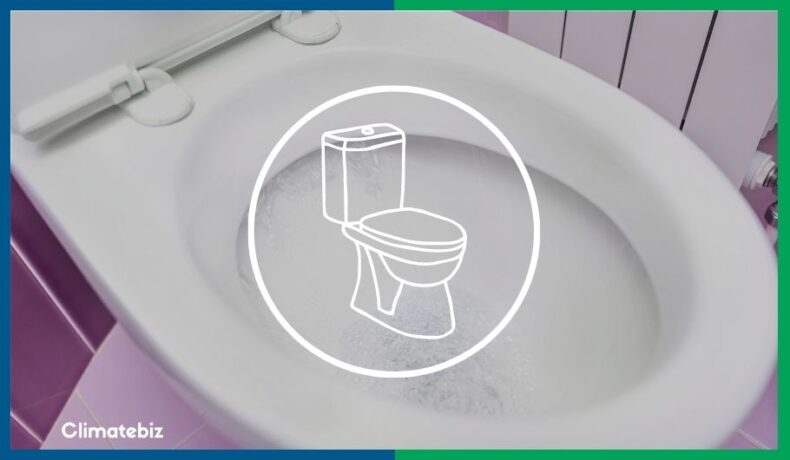Many of you are probably familiar with the tremendous amount of water that toilets use. What you might not be so familiar with, though, is low-flow toilets.
When you decide to go green, you’ll probably catch yourself thinking about the amount of water that your home consumes. One of the first appliances that your mind will jump to is the dishwasher — this is only natural.
Did you know that the most popular brand of dishwasher in America uses 3 gallons of water on eco-wash?[1]
Well, your toilet uses twice that amount!
Swapping out your conventional toilet for a low-flow option will save water and money. Using a low-flow toilet can save you 43% of your utility bill!
If you’d like to know more, then this article is for you!
Table of Contents
What Are Low-Flow Toilets?
Low-flow toilets use significantly less water than a regular toilet would. People ended up creating these toilets to save water and reduce water contamination.
Now, homeowners are taking a step in the right direction and becoming more environmentally conscious. As a result, home design manufacturers have developed new green-tech for homes to meet the demand.
The low-flow toilet is one of these designs.
A low-flow toilet uses less water to flush the waste down the toilet than a regular toilet would. But how much water do these toilets save?
Older toilets use around 7 gallons of water per flush, while newer conventional toilets use 3.4 gallons.
Low-flow toilets only use 1.2 gallons (4.5 liters) of water per flush.
Is There A Difference Between Low-Flow and Dual Flush?
The most significant difference between low-flow and dual flush toilets is that a dual-flush has two flush options.
A dual flush toilet has two options, one for urine and one for feces. A low-flow has only one option.
A dual flush toilet is technically a low-flow toilet as its larger flush option uses 1.2 gallons of water. Its smaller flush option is an efficient 0.8 gallons!
How Do Low-Flow Toilets Work?
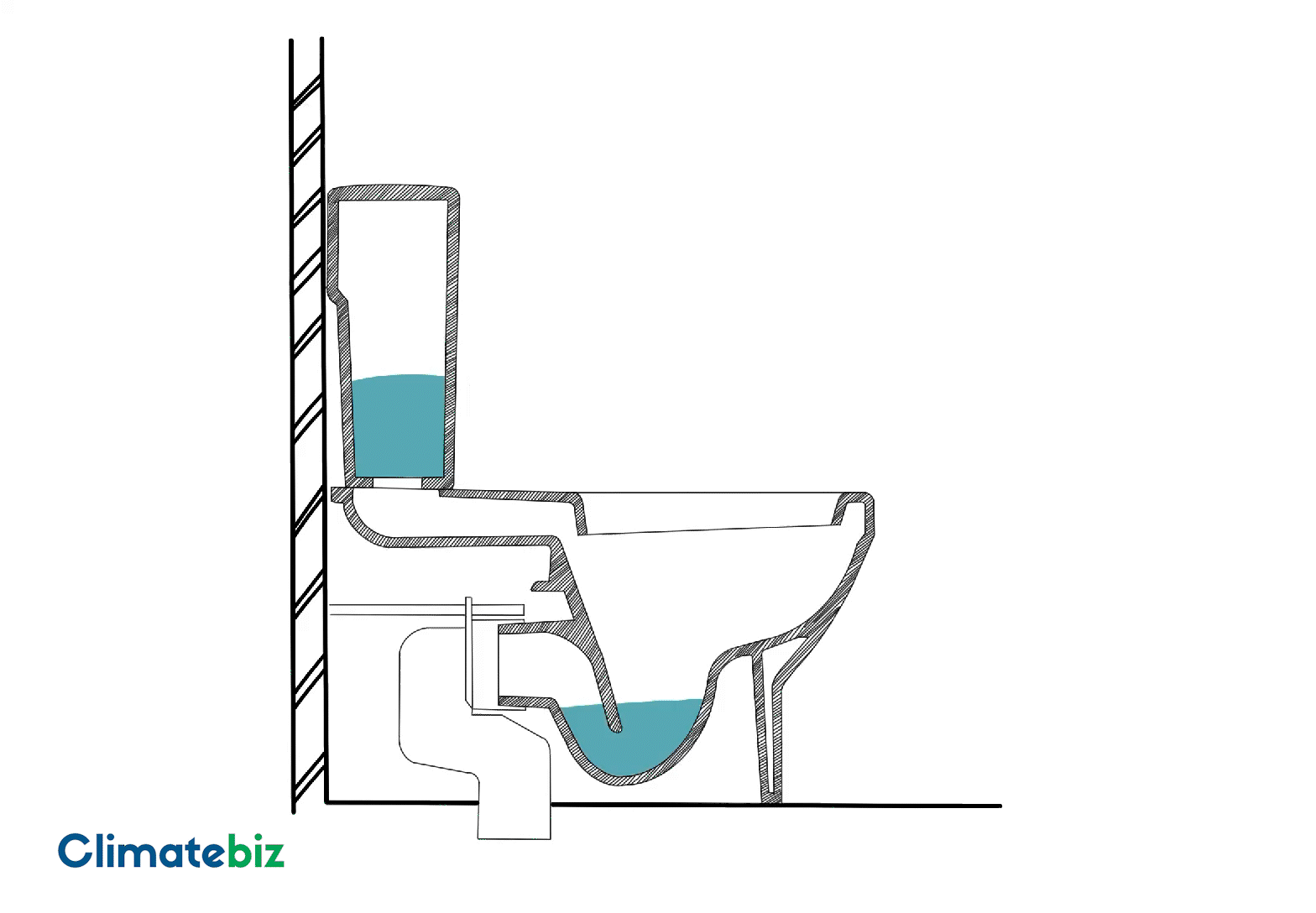
There are two main types of low-flush toilets. One works just like your toilet at home, while the other is more efficient and uses pressure.
Gravity Flush Low-Flow Toilets
Gravity is an amazing force that we use all the time — it’s actually how your standard toilet works.
The water flows from the cistern down into the toilet bowl, carrying the waste into the waste pipes.
The only difference between low-flow toilets and conventional toilets is the amount of water used.
Sure, other adjustments make a difference, like the angle of your waste pipe, but we’ll touch on that later.
Pressurized Low-Flow Toilets
Pressure is something used throughout your home — think about your water geyser. Without pressure, your shower would be a slow drip, and your bath would take hours to fill.
Pressurized low-flow toilets take advantage of this pressure to give you a stronger flush with less water.
While costing a little more, these toilets offer the advantage of a strong flush every time. You won’t need to flush more than once, saving you time, water and money.
The cistern uses pressure to force the water out of the tank in a jet-like fashion when you flush. A torrent of water jets into your toilet bowl, taking all the waste into the drain with it.
How Much Do Low-Flow Toilets Cost?
The cost of your low-flow toilets will depend on the type of toilet you choose to buy.
Pressurized low-flow toilets cost more because of the tech needed to pressurize the cistern.
We’ve conducted a cost analysis from multiple manufacturers to find the average prices for low-flow toilets.
| Gravity Low-Flow Toilets | Basic Price (USD) | Average Price (USD) |
| Just the toilet | $152.75 | $225.30 |
| Installation included | $377.75 | $510.30 |
You’ll see that we have a basic price and an average price. This is because we have to account for design. Luxurious low-flow toilets will cost more than your stock standard one.
| Pressurized Low-Flow Toilets | Basic Price (USD) | Average Price (USD) |
| Just the toilet | $275 | $282.50 |
| Installation included | $600 | $620 |
These prices may seem really high for a toilet. But let’s compare the above figure to how much a conventional toilet would cost.
| Toilet Type | Conventional Toilet (USD) | Low-Flow Toilet (USD) | Difference (USD) |
| Conventional Toilet vs. Gravity Low-Flow | $500 | $510.30 | $10.30 |
| Conventional Toilet vs. Pressurised Low-Flow | $500 | $620 | $120 |
As you can, the difference in cost between conventional toilets and low-flow toilets is between $10 – $120.
But What About Those Dual Flush Toilets We Mentioned?
Dual flush toilets (also considered low-flow, remember?) also cost more than conventional toilets but still have that slight advantage over gravity low-flow toilets.
| Toilet Type | Conventional Toilet | Dual Flush | Difference |
| Conventional Toilet vs Dual Flush | $500 | $610.30 | $110.30 |
| Toilet Type | Low-Flow Toilet | Dual Flush | Difference |
| Dual Flush vs Gravity Low-Flow | $510.30 | $610.30 | $100 |
Clearly, dual-flush toilets are more expensive than both conventional and low-flow toilets.
If you think about it, it makes sense. The dual flush toilet requires more mechanisms to separate the different types of water flow.
Related Reading: How Does Greywater Disposal Work?
Are Low-Flow Toilets Worth The Cost?
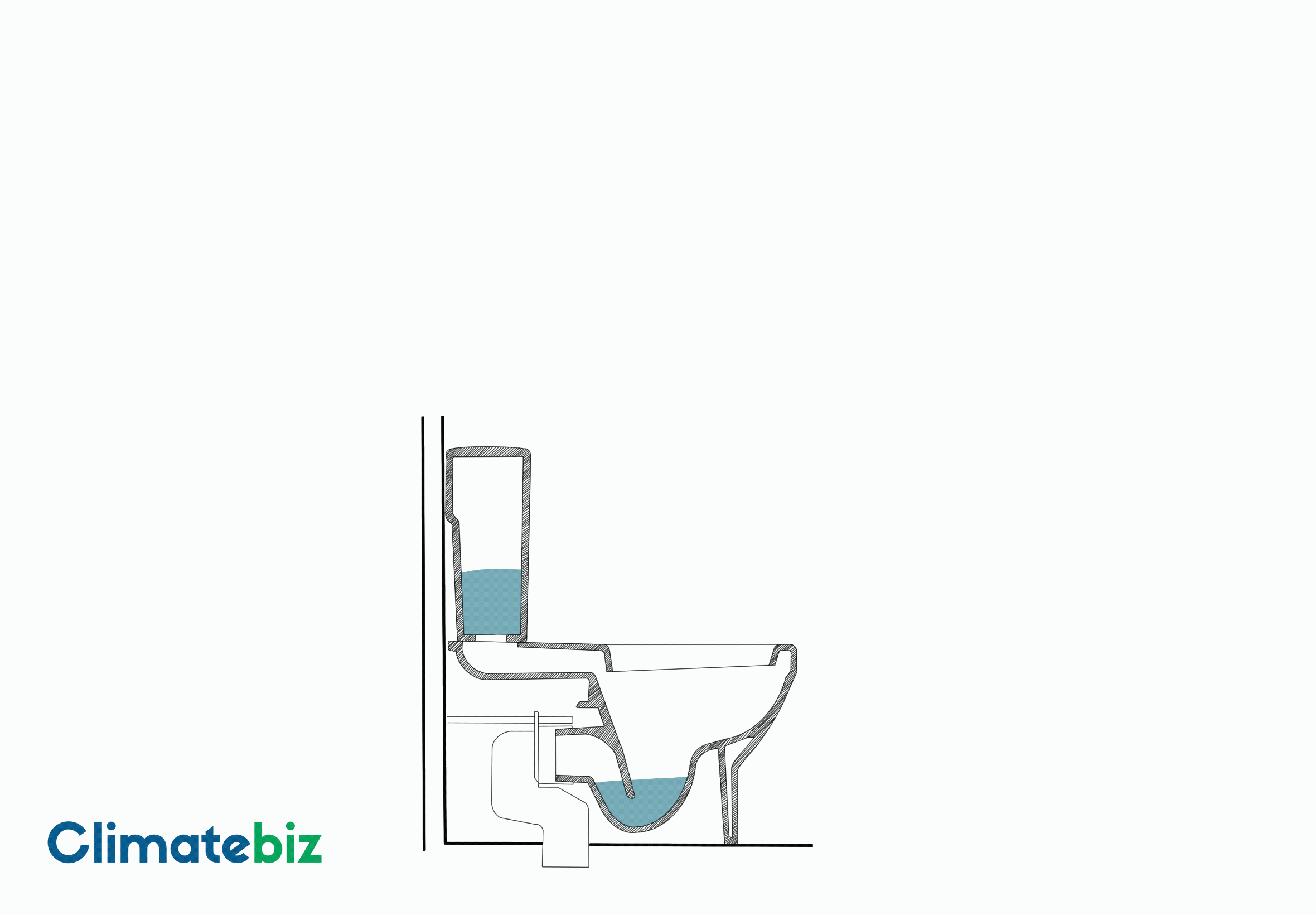

With the amount of water that low-flow toilets save, they are definitely worth the cost!
How Much Can You Save?
Conventional toilets use about 3.4 gallons (12.8L) per flush. The average person flushes the toilet 5 times a day. That’s 17 gallons (64.3L) of water a day! To put that into perspective, that’s 136 bottles of water per day, per person!
The most efficient low-flow toilets use 6 gallons (22.5L) of water per day.
That’s an 11-gallon (41.6L) difference per day!
That means that the average American family of 4 members would save $34.09 a month and $409.14 annually. [2]
That’s a 43% monthly savings on your water utility bill!
Example
An example of how low-flow can save money is the case study of the University of Wisconsin-Madison Residence hall.
The project was to replace all existing fixtures with low-flow fixtures. The project was estimated to save the University $2,380 in water utility bills annually![3]
A typical low-flow toilet, which costs $620, would take 1.5 years to pay off. Sure, that’s a long time to pay a toilet off, but the monthly savings from then on are fantastic!
Please note: These figures are based on the average price according to census websites. The costs and percentage saved will differ from case to case.
Are Low-Flow Toilets Bad For Septic Systems?
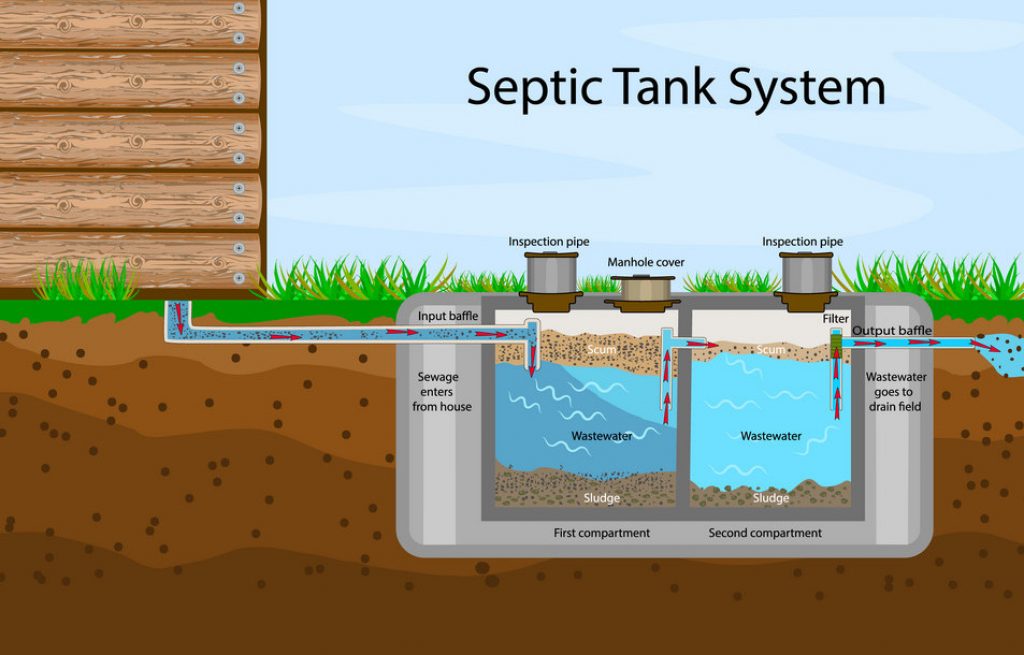
Source: VectorStock
If you own a septic system, you probably know how it works and how to maintain it.
But did you know that too much water is bad for the system? This means that low-flow toilets are better for your septic systems compared to conventional toilets.
Excessive water is the most common reason behind a septic tank malfunctioning. So, instead of upgrading your septic tank, think about changing your toilet first.
Too much water can cause the following to happen:
- The ground might not absorb the water due to over-saturation.
- Too much water won’t allow the scum and the sludge to separate properly. In other words, the solids won’t settle and separate.
Related Reading: Greywater System (Everything you need to know)
A Note About Low-Flow Toilet Plumbing
Since low-flow toilets use less water, especially dual flush toilets, there might be an issue with the plumbing.
The standard slope of a waste pipe is 1/4 inch per foot. Therefore, the waste pipe should be 1/4 inches deeper for every foot.
The slope above is a sweet spot; the waste doesn’t get stuck, nor does it shoot down the pipe.
However, this design is for a conventional toilet. There is a slight possibility that the water from a low-flow toilet won’t be enough to push the waste down.
Thus, it might be a good idea to adjust the slope, especially with a low-flow septic tank system. A gradient of 1/3 inch per foot would be sufficient.
Adjusting the slope of your pipe is not an option for everyone. If you already have plumbing installed, changing the slope is not feasible. Keep this in mind if you’re installing a septic tank.
Do Low-Flow Toilets Smell?
A common myth about “unconventional” toilets is that they’ll smell. — did you know that it’s not the design of the toilet or the amount of water used that influences the smell?
In every toilet, there’s something called a trap. The design of this trap ensures that there’s always water in it. This water prevents any unwanted smells from rising from the sewage and into your bathroom.
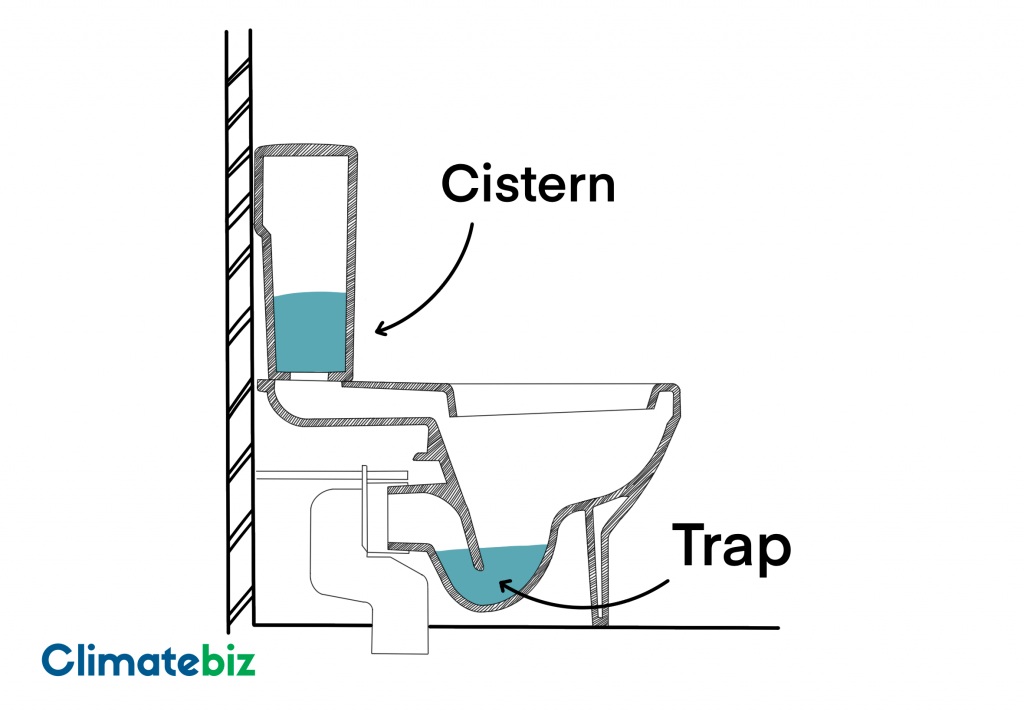
This trap is applied to low-flow toilets as well. Regardless of the type of low-flow you have installed, the trap will prevent any unwanted smells.
There is still water present in a low-flow system, so you won’t have to worry about the trap running dry.
Related Reading: All You Need To Know About Composting Toilets
In The Event That It Does Smell
Don’t blame the low-flow design. It’s likely a problem with your trap. There probably isn’t enough water in it, and this isn’t because it’s low-flow.
There are two reasons why a trap could dry up:
- If you haven’t used the toilet in a long time (like in a holiday house), the water in the trap can evaporate. Here’s an easy fix — flush the toilet a couple of times or use a bucket to fill the toilet bowl. This will fill the trap back up with water.
- The water might have been syphoned out — this often happens in larger systems or when there is a pressure problem. This is trickier to fix, so we sugges that you contact a plumber.
Low-Flow Toilets Pros And Cons
Now we’ll sum up everything we’ve discussed into a pros and cons list:
Final Thoughts
You probably haven’t thought about swapping your toilet for a newer model — don’t worry, nobody does!
But we hope you consider opting for a low-flow toilet. Sure, it might cost more, but think about the amount of water and money you’ll save in the long run!
You’ll save 3 gallons per day in a one-person household. What’s more, you can save 43% off your utility bill!
There are a good few advantages that come with low-flow toilets, making them worth the cost!
If you’re renovating or simply looking at making your home eco-friendly, a low-toilet is a great option!

